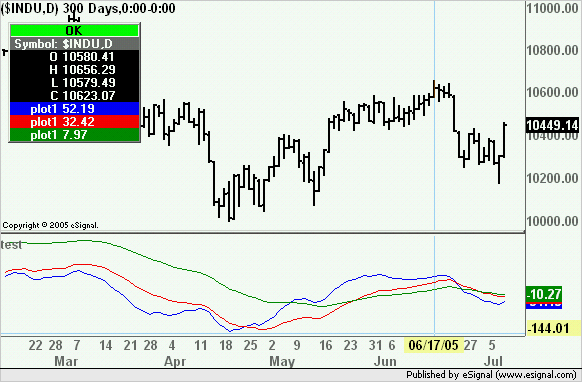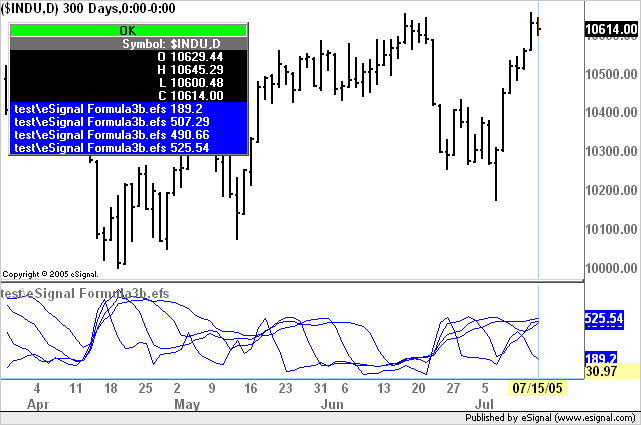Hi,
Q1. I was under the impression that we use the same function [with efsInternal] many times, with diferent set of input parameters and generate diferent series.
Is this true?
Note: I used the same function 4 times, with diferent sets of parameters, but only the first instance plots for all four. I changed the order and the plots change as well, but still the same for all four series.
Note: If I create four diferent functions, that I call only once, I get diferent plots, as expected.
Here is the setups [I use only two iterations]:
This works [diferent plots]
function main() {
study1 = efsInternal("Function1", Param1);
study2 = efsInternal("Function2", Param2);
return new Array(study1.getValue(), study2.getValue());
}
fucntion Function1(Param) {
//Calculations
return Result;
}
function Function2(Param) {
//Same calculations
return Result;
}
This does not work [plots only first instance for both, or all]
function main() {
study1 = efsInternal("Function", Param1);
study2 = esfInternal("Function", Param2);
same return as above
}
function Function(Param) {
//Same calculations as above
return Result;
}
Thank you.
Mihai
Q1. I was under the impression that we use the same function [with efsInternal] many times, with diferent set of input parameters and generate diferent series.
Is this true?
Note: I used the same function 4 times, with diferent sets of parameters, but only the first instance plots for all four. I changed the order and the plots change as well, but still the same for all four series.
Note: If I create four diferent functions, that I call only once, I get diferent plots, as expected.
Here is the setups [I use only two iterations]:
This works [diferent plots]
function main() {
study1 = efsInternal("Function1", Param1);
study2 = efsInternal("Function2", Param2);
return new Array(study1.getValue(), study2.getValue());
}
fucntion Function1(Param) {
//Calculations
return Result;
}
function Function2(Param) {
//Same calculations
return Result;
}
This does not work [plots only first instance for both, or all]
function main() {
study1 = efsInternal("Function", Param1);
study2 = esfInternal("Function", Param2);
same return as above
}
function Function(Param) {
//Same calculations as above
return Result;
}
Thank you.
Mihai



Comment